Tesla's new moonshot is solar energy — here's why it might just work
Can Tesla change how we power our homes, forever?
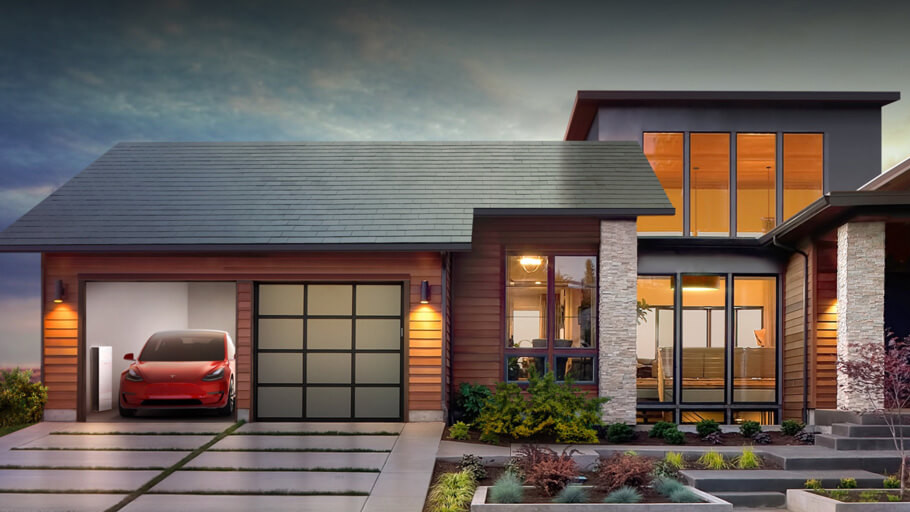
Tesla is a powerhouse in the modern tech world, and for good reason. The company's push for electric cars has captivated consumers, investors and industry observers, and the result is that Tesla is now the most valuable American car company. CEO Elon Musk has even set his sights on one day overtaking Apple in terms of company worth.
More recently, Tesla's focus has broadened, and it's made a different kind of push, one that aims to capture energy from the sun and use it to power people's homes.
- Energy comparison: reduce your energy bills now
- The best energy supplier in the UK
- The best energy deals in the UK
The move makes sense. Tesla isn't just a car manufacturer. Rather, it's a multi-pronged company looking to achieve unseen heights in renewable energy. Tesla wants to radically transform how we access and use energy in our everyday lives, and to that end it's spearheading two different products: solar panels and solar roof tiles, also known as the Tesla Solar Roof.
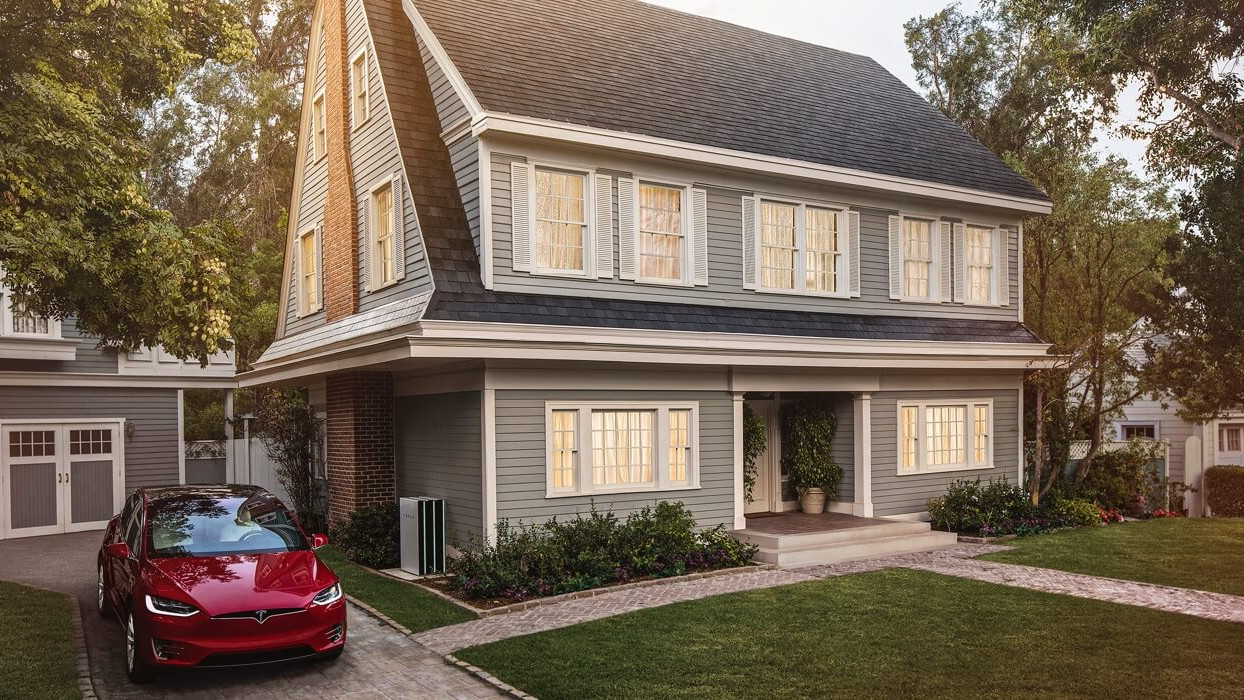
Tesla's solar products are remarkably different than what we're used to seeing. Not only are the designs sleeker than traditional solar panels, but Tesla claims they are also cheaper, and that's before the savings you can expect on your power bill.
There are, of course, plenty of questions. How does Tesla plan to implement this new wave of solar power products? Is its technology really cheaper and more effective than traditional solar panels? And can Tesla pull off completely transforming home energy consumption, forever?
Tesla and solar energy: a brief history
Tesla's mission in solar and beyond is clear: the company wants to re-imagine how we consume energy. You might not know, however, that this plan actually isn't new.
In the 'Secret Tesla Motors Plan (just between you and me),' a blog post written in 2006, Musk described his grand vision to transform Tesla into more than a car company.
Get daily insight, inspiration and deals in your inbox
Sign up for breaking news, reviews, opinion, top tech deals, and more.
"...the overarching purpose of Tesla Motors (and the reason I am funding the company) is to help expedite the move from a mine-and-burn hydrocarbon economy towards a solar electric economy, which I believe to be the primary, but not exclusive, sustainable solution," wrote Musk.
Tesla started laying the groundwork for that transformation long before it announced a single solar panel. Critical to using green energy is the ability to store it, and Tesla came up with a way to do just that in the Powerwall. First announced in 2015, the Tesla Powerwall serves as a battery to store energy captured by solar panels and tiles.

The Powerwall stores energy collected from a solar roof or tiles, or even from the electric grid. The stored energy can be used to power a home when there's no sunlight, or when the cost of electricity is higher, such as during the early evening hours.
While the original Powerwall came at a cost of $3,000 or more, the new and improved Powerwall 2 starts at $5,500, largely because it includes a built-in power inverter.
This means the unit will convert captured energy from the sun into energy that can actually be used in your home. Previously, you had to buy an inverter separately.
With its Powerwall in place, in August 2016 Tesla took an even bigger step in becoming a solar power powerhouse when it purchased SolarCity for $2.6 billion. Founded by Elon Musk's cousin, Lyndon Rive, SolarCity specializes in the installation and development of solar panels. The SolarCity acquisition was a huge deal for Tesla; with SolarCity under its wing, Tesla can deploy full solar systems, complete with solar roofs, batteries, and so on.
Catching rays
Part of the appeal of Tesla's solar solutions are how aesthetically appealing they are thanks to sleek and modern designs that blend seamlessly with homes. Tesla proved energy efficiency doesn't have to come at the cost of curb appeal with its Model S and Model X vehicles, and it's doing so again with solar power.
It's important to reiterate that Tesla has two solar products right now: more traditional solar panels and the Solar Roof, which looks like standard (yet beautiful) roof shingles, but serve as both roofing and solar panels.
But looks will only take you so far, and Tesla has made its solar solutions functional, too.
The technology used in its tiles is a new form of solar tech, and thus a bit of a change for Tesla.
When Tesla first launched the Model S, it did so using a slew of existing technologies and battery cells built by Panasonic. With its solar tiles, Tesla has tapped a new technology built by Silevo, a company that was acquired by SolarCity for $200 million in 2014. That technology, however, is still somewhat new, and it's unproven in large-scale manufacturing, according to The Buffalo News. So, while the technology works in the lab, it's still unclear if it can be as efficient on a larger scale.

The tiles essentially incorporate different layers — a layer of glass on the top, then layers of various films, then solar cells, which convert light into electricity. Silevo technology uses what's called a "heterojunction cell," and while the details get technical, the point is this: Silevo tech could offer an efficiency of up to 22%, which is greater than averages of between 10% and 15% that more traditional panels achieve.
There are still a few things that are a unclear about Tesla's tiles at this point, however. Tesla is expected to use both Silevo and Panasonic technology in its solar products, but these will need to prove they can work considering Silevo is still considered somewhat experimental.
It also appears as though Tesla has taken a step back from Silevo because of its partnership with Panasonic, but that doesn't mean it's ditching the tech altogether. Instead, it's likely the technology just needs some more development to be effective on a mass scale.
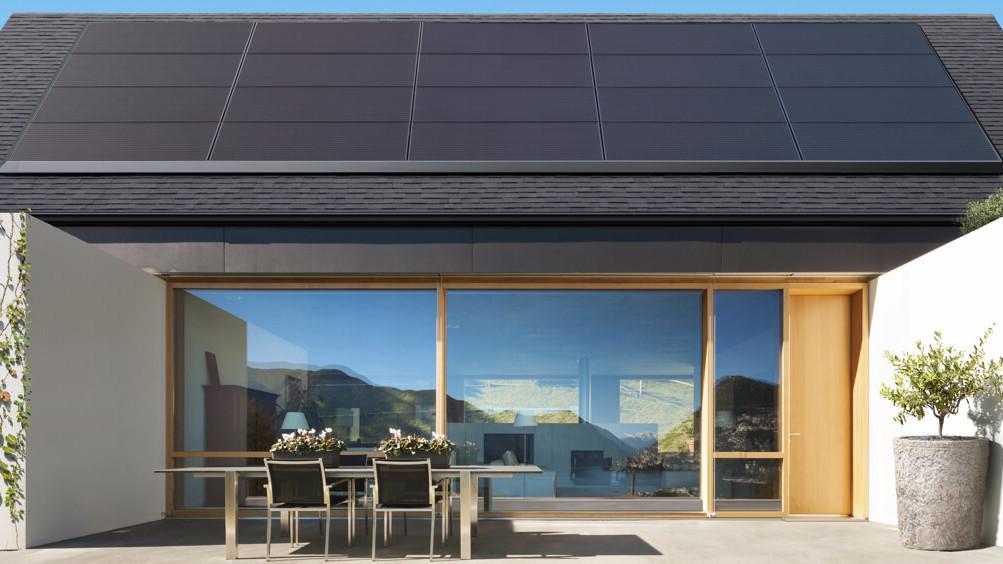
Meanwhile, Tesla's solar panels, announced in April 2017, are different than the solar tiles. They look more like traditional panels, albeit sleeker. This is thanks to a much lower profile than other solar panel offerings.
According to Tesla, the panels "exceed industry standards for durability and lifespan." The panels aren't actually built by Tesla, but rather by Panasonic, which are then re-sold by Tesla. These don't use the Silevo technology found in Tesla's tiles.
'Plug it in and use it'
In addition to a pleasing design, experts argue the intelligence of Tesla's software combined with its Powerwall home batteries will be the real draw to home owners.
Tesla has revealed little about the software behind Powerwall, but on the consumer level it can monitor energy usage in real-time and features artificial intelligence that allows it to automatically adjust its settings according to your usage needs and daily routine. While you don't necessarily need a Powerwall, it helps Tesla solar users get the most out of their panels or tiles.
"Tesla is using existing off-the-shelf battery technology [lithium ion] but bundles its very tech-smart information systems design to make storage just as easy as solar," Daniel Kammen, Professor of Energy at the University of California, Berkeley, tells TechRadar. In other words, solar energy is already easy, and Tesla makes storing it just as simple.
"Plug it in and use it," Kammen said.
This end-to-end package isn't something other solar companies seem to have mastered: they don't use solar to its full potential, and all the energy captured during the day can't be used at night without a decent battery. With Powerwall, Tesla is delivering a holistic solution to consumers.
Real solar savings?
While solar energy in general saves money on electric bills, it's still expensive to install, so you may not feel like you've saved money for quite some time if you go Tesla's route. Still, the company argues that eventually you will see worthwhile savings on energy use.
According to Tesla, the real savings are to be found in its Solar Roof. And we’re not just talking the cost of the tiles compared to other solar products: Musk said during an earnings call in November that installing its roof is cheaper than installing standard roof tiles. And that's before the money you save from the energy it generates.
"Electricity," Musk said, "is just a bonus."
Electricity is just a bonus
Tesla CEO Elon Musk
But is this claim of cheaper costs true? Well, it's complicated. According to Musk, the solar tiles are cheaper than the cost of concrete or ceramic roof tiles. Those, however, are among the more expensive roof tiles out there, running between $400 and $2,000 per 100 square feet, according to The Motley Fool.
So while Tesla's roofing may end up being cheaper than some traditional materials, it will only be cheaper than the more expensive traditional materials.
Tesla unveiled pricing for its Solar Roof earlier this week, so we can helpfully run the numbers. On average, a Solar Roof will cost $21.85 per square foot for a 3,000-square-foot roof, although that pricing depends on factors like location and the ratio of solar to non-solar tiles you purchase.
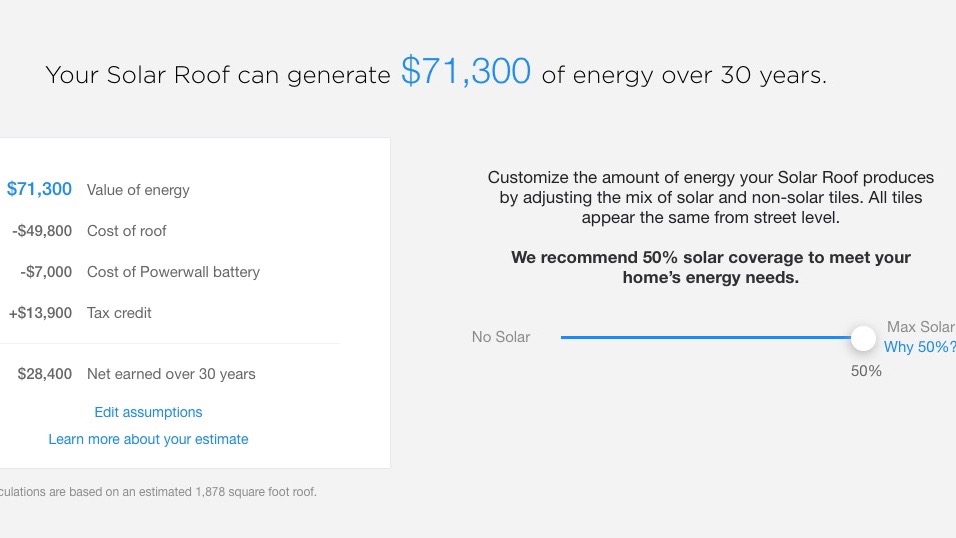
Because pricing varies home-to-home, Tesla launched an online calculator to figure out price estimates.
For this story, we plugged in a 3,000-foot-square roof in Sunnyvale, California, and received a roof installation estimate of $79,500, plus $7,000 for the Tesla Powerwall. Undoubtedly that's a lot of money, but for the materials used and the type of roof you're getting, it's actually around the same price as a non-solar roof.
According to Consumer Reports, a traditional Slate Tile roof would cost around $98,500 to install on a 3,000-foot-square roof, making it more expensive than the $79,500 Textured or Smooth Glass roof we calculated for our fictional Sunnyvale home.
What's more, you start saving after the initial install. In California, you would get a $21,000 tax credit for installing such a roof, and Tesla says the roof would generate $113,900 of energy over the next 30 years. At the end of the 30 years, you will have paid off your roof, and generated an extra $48,400 worth of energy. In the long run, your solar roof would cost zero dollars, and you could even make money from it by selling the extra energy.
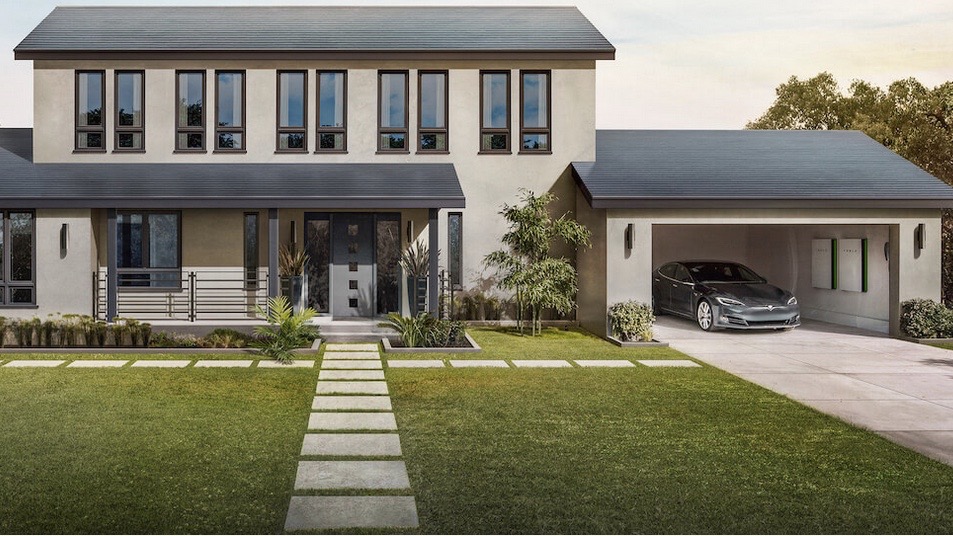
An important part of Tesla's equation is the ratio of solar tiles to non-solar tiles. Tesla's roofing is actually built from a combination of solar and non-solar tiles, and you can adjust the ratio you want installed. Using fewer solar tiles and more non-solar tiles will result in a cheaper installation cost, but less energy generated.
Tesla's solar tiles are, at least on paper, worth it the investment, even if you weren't thinking of getting a more expensive slate glass roof. Traditional roofing simply can't generate money, and will only cost you in repairs and replacements. Even cheaper asphalt tile roofing, which costs around $20,000 to install on a 3,000-foot-square roof, will cost you more money over time.
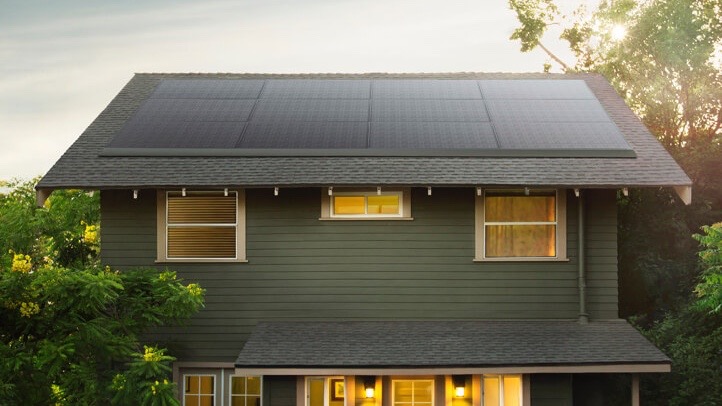
And what about the more traditional Panasonic-made solar panels Tesla recently unveiled? Are they more affordable and cost effective than other panels? Unfortunately, we can’t know yet as Tesla hasn't announced pricing for its panels.
We can do a bit of sleuthing, however. Solar Power Authority, which offers quotes for panels, says the average cost of solar panels is around $5-$6 per watt including installation. That puts a 5kW system between $25,000 and $30,000.
Tesla’s Panasonic modules each offer 325 watts, so each module should sit between $1,625 and $1,950. They likely won’t be sold by individual modules, but any less than that would be considered a good price to pay.
Tesla solar takes flight
Tesla is still working on its solar products, and in fact only two of its four solar tile options are available this year, with the others arriving in 2018. The two up for pre-order now are Textured Glass and Smooth Glass, and next year will see Slate Glass and Tuscan Glass.
Tesla's venture into solar may still be in the early stages, but already it's poised to be an influential player in the renewable energy world, helped by unique products, a respected business model and name recognition.
"Tesla has both a fantastic technology solution that is available right now, and a great brand and market research," said UC Berkeley's Kammen. "This is a powerful combination."
The big question now is whether home owners actually buy a Tesla Solar Roof or panels. Residential solar is on the rise in the US, but while 2016 was the market's biggest year to date, the number of residential solar installations in the country still only totals somewhere above one million, according to the Solar Energy Industries Association.
The climb to widespread residential solar adoption is steep, but with Tesla joining the fray, more homeowners may now consider switching to solar, whether for the installation price, long-term savings, to be an early adopter, or all of the above.
What is clear is Tesla is serious about solar, and we expect to learn about improvements in the technology, cheaper pricing and even more energy products in the months and years to come.
Christian is a writer who's covered technology for many years, for sites including Tom's Guide, Android Central, iMore, CNN, Business Insider and BGR, as well as TechRadar.